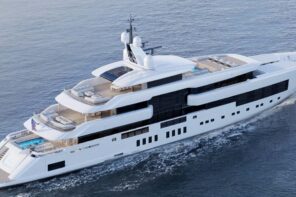In a bold leap toward revolutionizing air travel, NASA has announced its ambitious endeavor to develop a supersonic passenger aircraft capable of reaching a top speed of Mach 4, approximately 3000 mph. This cutting-edge aircraft is set to surpass not only the Concorde but also the iconic SR-71 Blackbird spy plane in speed, promising to drastically reduce travel times on established transoceanic routes.
The proposed supersonic jet, a brainchild of NASA’s Advanced Air Vehicles Program, has the potential to transform the landscape of international travel. It is projected to shorten the travel time between New York and London to less than one and a half hours, an astonishing feat compared to the current 8 to 9-hour journey. This remarkable advancement in aviation technology could open up new possibilities for business, tourism, and global connectivity.
The demise of the Concorde, a symbol of supersonic air travel, was influenced by several factors, notably the disruptive sonic boom that occurs when an aircraft breaks the sound barrier. Many countries, including the United States, prohibited supersonic flights over their territories due to the jarring sonic boom. However, the scientific community has been diligently researching ways to mitigate this effect, and NASA’s Quesst Mission, which features the development of the experimental X-59 quiet supersonic aircraft, is a significant step in that direction.
NASA’s recent announcement comes on the heels of the identification of fifty key transoceanic routes, particularly those connecting major cities across the North Atlantic and Pacific regions. These routes avoid the issue of sonic booms over land, enabling supersonic flight without disruptive repercussions. By focusing on these routes, NASA aims to create a network of efficient, ultra-fast travel options that bridge continents and cultures.

To advance the development of the supersonic jet, NASA is set to issue two-year contracts to prominent aerospace firms for the creation of concept designs and technology roadmaps. Boeing, along with partners Exosonic, GE Aerospace, Georgia Tech Aerospace Systems Design Laboratory, and Rolls-Royce North American Technologies, will lead the first contract. The second contract will be awarded to Northrop Grumman Aeronautics Systems, collaborating with Blue Ridge Research and Consulting, Boom Supersonic, and Rolls-Royce North American Technologies. Both teams will delve into critical aspects such as airframe design, propulsion systems, power sources, thermal management, and innovative materials necessary for achieving sustained Mach 4 flight.
Mary Jo Long-Davis, the manager of NASA’s Hypersonic Technology Project, emphasized the significance of these endeavors, stating, “The design concepts and technology roadmaps are really important to have in our hands when the companies are finished. We are also collectively conscious of the need to account for safety, efficiency, economic, and societal considerations.
As these aerospace pioneers embark on this audacious mission, the skies of the future seem poised to welcome a new era of travel, one that redefines speed, efficiency, and global connectivity. NASA’s supersonic passenger aircraft project represents not only a technical achievement but also a testament to humanity’s unrelenting pursuit of progress and exploration.





